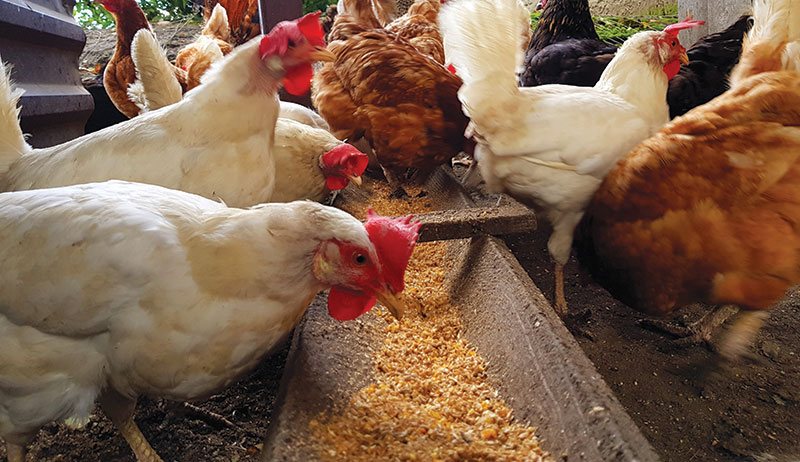Fermenting chicken feed is an age-old practice that has been gaining new popularity among poultry enthusiasts. This process not only enhances the nutritional value of the feed but also provides numerous benefits for both chickens and their keepers.
Whether you are new to poultry care or have been raising chickens for years, fermenting your feed could be the game-changer youre looking for. To help you dive into this fascinating topic, we’ll guide you through the entire process from start to finish.

The Tremendous Benefits of Fermenting Chicken Feed
Nutrient Absorption
Fermenting feed enhances the bioavailability of nutrients. This means your chickens can absorb more vitamins, minerals, and probiotics from the same amount of feed, leading to healthier and more robust birds.
Improved Digestion
The fermentation process pre-digests the feed, making it easier for your chickens to digest. This can lead to better overall digestive health, which in turn means fewer digestive ailments and less feed-related stress for your flock.
Reduction in Feed Costs
Given that fermented feed is more nutrient-dense, your chickens will ultimately need to eat less to meet their nutritional requirements. This can significantly reduce your overall feed costs.

How to Ferment Chicken Feed: A Step-by-Step Guide
Gathering Supplies
To start, you will need a few simple supplies: fermenting vessel, water, chicken feed, and a stirrer. A typical mason jar or a food-grade bucket works well as a fermenting vessel.
Adding Water
Fill the vessel about halfway with your chosen chicken feed. Next, add water to the vessel until it covers the feed by about an inch. Stir well to ensure that all the feed is soaked properly.
Fermentation Time
Cover the vessel with a loose lid to allow gases to escape. Let the feed sit at room temperature for 3-4 days, stirring daily. The feed will start to bubble and develop a slightly sour smell, indicating successful fermentation.
Feeding Your Chickens
After around four days, your feed is ready. Simply drain off the excess liquid and serve the fermented feed to your chickens. Its best to introduce the fermented feed gradually to allow your chickens to get used to it.

Common Mistakes and How to Avoid Them
Using the Wrong Vessel
Make sure your fermenting vessel is food-grade and can handle acidic environments. Non-food grade plastics or metals that can corrode should not be used.
Over Fermentation
While fermenting usually takes 3-4 days, going beyond that can lead to spoilage. Keep an eye on the smell and appearance of the feed to ensure it hasnt gone bad.

Additional Tips for Success
Quality of Water
The quality of water you use can significantly affect the fermentation process. Always use clean, preferably filtered, water to avoid introducing harmful bacteria into the feed.
Choosing the Right Feed
Not all chicken feeds are created equal. Opt for natural, non-GMO, and organic feeds for the best results. [What breed lays jumbo eggs?](https://chickenthingsandmore.com/what-breed-of-chicken-lays-jumbo-eggs/ ‘What breed lays jumbo eggs?’ rel=’dofollow’)
Seeking Expert Advice
Feel free to consult online forums or local poultry experts for advice on fermenting feed. Their experience can be invaluable in troubleshooting any issues you might encounter.
Case Studies: Real-Life Success Stories
Many poultry keepers have reported dramatic improvements in their flocks after switching to fermented feed. Chickens become healthier, egg production increases, and behavioural issues often diminish.
One particular case is Jane Doe, who noticed a 20% increase in egg production within just a month of introducing fermented feed. Similarly, John Smith observed that his chickens were less prone to illnesses and had shinier feathers.
Why Fermenting Chicken Feed is Fast Becoming a Big Trend
The Role of Technology
Advancements in technology have made it easier for anyone to start fermenting chicken feed. From better fermenting vessels to more accessible information, technology plays a crucial role in this growing trend.
For example, automated fermenting systems can control the temperature and timing more precisely, making the process virtually foolproof. Additionally, there are numerous online platforms where enthusiasts can share their experiences and tips.
Comparing Fermented Feed with Commercial Feed
Nutritional Value
While commercial feeds are designed to be nutritionally balanced, the fermentation process can elevate the nutrient profile of standard feed significantly. [Long-living chickens?](https://chickenthingsandmore.com/what-breed-of-chicken-lives-the-longest/ ‘Long-living chickens?’ rel=’dofollow’)
Cost-Effectiveness
Fermented feed can be a more cost-effective option compared to premium commercial feeds. The high nutrient density means your chickens will need to consume less to meet their dietary needs.
The Future of Fermented Chicken Feed
Sustainability
Fermenting feed contributes to sustainable farming practices. Less feed consumption means reduced environmental impact, making this practice a win-win for farmers and the planet.
Growing Community
The community of poultry enthusiasts practicing feed fermentation is growing daily. With more people sharing their positive experiences, it is only a matter of time before this practice becomes mainstream.
For more information, check out this comprehensive guide on Best Backyard Chickens.
FAQs
What is the Ideal Temperature for Fermenting Chicken Feed?
The ideal temperature for fermenting chicken feed is between 60-70F. Temperatures lower than this may slow down the fermentation process, while higher temperatures could risk spoilage.
Can All Types of Feed Be Fermented?
Most types of feeds can be fermented, but it is generally best to use natural, organic feeds free from additives or preservatives. Modified or processed feeds might not ferment as effectively.
How Do I Know If the Fermented Feed Has Gone Bad?
Look for off-smelling sour odours, unusual discoloration, or mold. If in doubt, it’s safer to discard the batch and start anew.
As an Amazon Associate, I earn from qualifying purchases.









